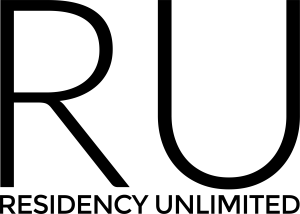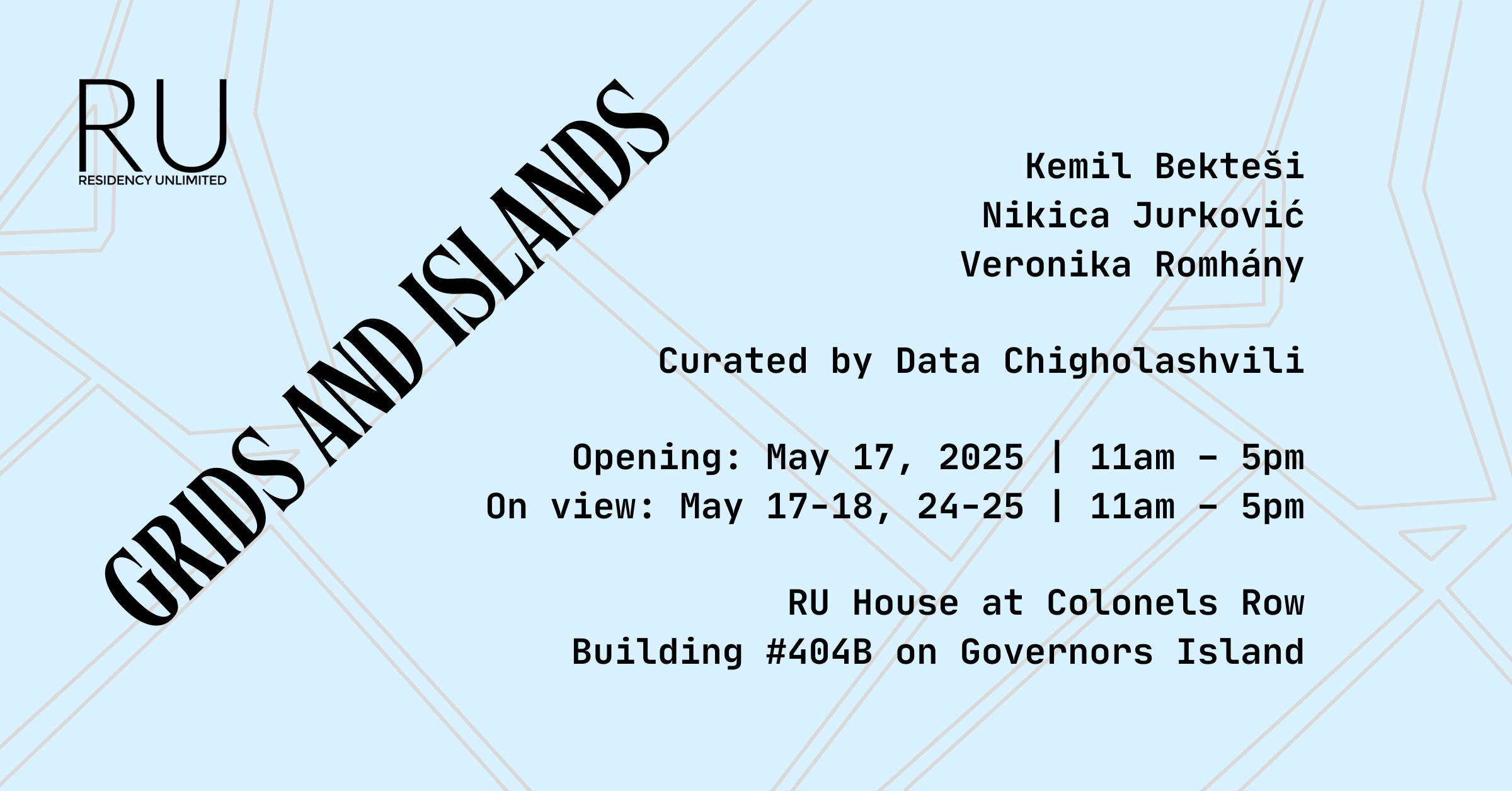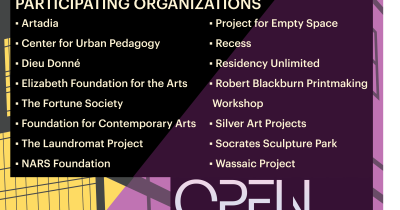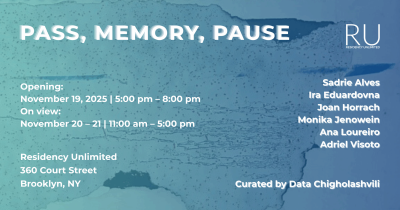Opening: May 17, 2025 | 11am – 5pm
On view: May 17 – 18 & 24 – 25 | 11am – 5pm
Weekday visits by appointment
Location: RU House at Colonels Row, Building #404B on Governors Island (map)
Ferry information | Video directions
Please join us for our first group exhibition of the 2025 season at the RU House on Governors Island, featuring works by RU artists: Kemil Bekteši, Nikica Jurković, and Veronika Romhány. “Grids and Islands” is curated by RU Curator Data Chigholashvili.
Grids are designed as organizing systems to support efficient movement and flow. At the same time, they create confinements and restrictions that need to be followed within their unifying orders. From a bird’s-eye view, separate blocks are observed as perfectly-shaped islands at the intersections of lines. However, a grid that is flat from above changes as one’s gaze descends and gradually gets lost in it. Think of looking at a city map on a smartphone and then going to a street view, moving one’s gaze a bit, then going back to the cursory view, and descending again into the surrounding imagery frozen in time – it can repeat as if it were on loop. However, these are just plans and images from a certain moment that don’t tell much about vast networks of social interactions and layers of lived experiences that exist in them, in the systems of straight lines that don’t always equally apply or fit. When thinking of an urban grid system, oftentimes, the first example that comes up is NYC, particularly Manhattan, one of the busiest and diverse islands.
The exhibition “Grids and Islands” takes place on Governors Island – a smaller one of the city that itself is mostly built on different islands – and explores these organizing networks from different perspectives. Featured works by RU resident artists question grids as structures of perfection, as layouts of data management or manipulation, and as networks of socio-cultural connections. In the exhibition, they seek out layers and links that emerge and exist, yet are not directly visible, with parallel and perpendicular lines, as well as the interconnected blocks and islands they create.
Click above to see the images from the program
Nikica Jurković plays with the idea of a perfect structure using the number 5, the highest grading score in the educational system of some countries. In “Straight A Students – Odlikaši (Collectors of 5s),” the artist uses sheets placed in rolling paper packs as a warning that only 5 papers remain. Arranged in the order of collection, a series of 5 rows and 5 columns of these warning signs creates 25 larger, colorful rectangles of 25 blocks within each. This use of 5×5 structuring in the work hints at creating perfect grids with variegated islands connected by empty spaces emerging between them, but it can also question what happens to it when something does not fit or perfectly flow in it.
Veronika Romhány investigates grids as foundations and coordinate systems in digital technology, where they are used for unifying, positioning, and manipulating data. The three-channel video installation on view presents a segmented hyper-realistic body of the artist’s digital twin that she created. It uses Romhány’s voice, or more specifically, the voice cloned after hers. The work appropriates the generic digital dataset of motions and emotions, however, different parts of the body present them either in simple loops or a complex set of all available samples. The work is spread across the floors and rooms of the exhibition. It provides a limited perspective on this anonymous body, suggesting how control affects individual perception and understanding.
Kemil Bekteši explores interconnected themes of migration and breadmaking. Reflecting on a story of his father being a migrant and a baker, he surveys the bakeries established by many who left Kosovo. In his works, different bread sculptures connect with bakeshop mapping of various cities where the migrants found new homes. The exhibition presents the fourth installment of this series – another network emerges above the famous grid when connections are made between the bakeries that the artist mapped in NYC. It links with a personal photograph with a note, and a sculptural installation of bread blocks, where this important cultural marker symbolizes the essence of building structures, as well as solidarity, support, and connections among scattered communities.
This program is supported by the Trust for Mutual Understanding.

This program is supported, in part, by public funds from the New York City Department of Cultural Affairs in partnership with the City Council.
![]()
RU is grateful for the partnership with Governors Island Arts.







